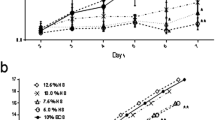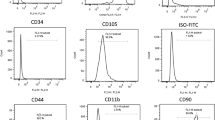Abstract
A step toward an improved understanding of the complex mechanisms of growth factor interactions may lie in the detection of endogenous growth factors during normal wound healing. The findings of this study on standardized full thickness wounds in swine, provide direct evidence that growth factors were present in the wound fluid in the picogram range (highest concentrations ranging from 1273 pg/ml for transforming growth factor-beta (TGFβ) to 85.6 pg/ml for platelet-derived growth factor-AB (PDGF-AB ) during healing. The presence of transplanted autologous keratinocyte suspensions and cultured epithelial sheet graft had no significant effect upon the observed growth factor levels, although transplanted keratinocyte cell suspensions (KCS) and cultured epidermal autografts (CEA) did accelerate healing in comparison to control wounds in our model (KCS treated wounds healed in 13.2±0.9 days, CEA in 13.7 days±0.8 and control wounds in 14.7 days±0.3). The variable occurrence of growth factors during normal wound healing may suggest possible mechanisms of growth factor interaction which could have an impact on the future design of their therapeutic use.
Similar content being viewed by others
Author information
Authors and Affiliations
Additional information
Received: 28 September 1998 / Accepted: 16 November 1998
Rights and permissions
About this article
Cite this article
Andree, C., Page, C., Slama, J. et al. Naturally occurring growth factors in porcine wounds treated with autologous keratinocytes in a liquid environment. E J Plastic Surg 22, 322–325 (1999). https://doi.org/10.1007/s002380050272
Issue Date:
DOI: https://doi.org/10.1007/s002380050272




